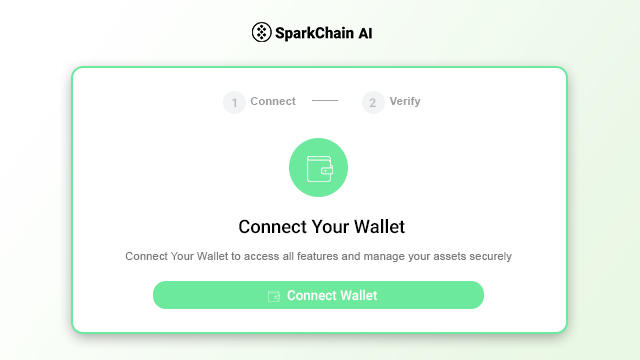SparkChain AI: The DePIN Revolution Reshaping AI Computing
SparkChain AI is a blockchain project focused on building decentralized physical infrastructure networks (DePIN), aiming to aggregate idle global bandwidth and computing power to create a high-efficiency, low-cost distributed AI network. The project targets three major pain points of traditional cloud services: high enterprise AI computing costs, severe latency from centralized architecture, and over 50% global idle consumer resources going to waste. On June 20, 2025, the project announced the completion of a $10.8M funding round led by OakStone Ventures, a Web3 infrastructure-focused firm. The funds will be used to expand the node network and optimize core protocols.

This market insight article discusses how SparkChain AI integrates global idle resources to build a DePIN network, decoding the technical logic and ecosystem prospects behind the $10.8M funding round.
Technical Architecture: Three-Layer Protocol Powering Resource Democratization
The Sovereign Data Rollup protocol forms the technical foundation, using a layered design to maximize resource efficiency:
Data Collection Layer
Allows ordinary users to contribute idle bandwidth via a browser plugin. Data is end-to-end encrypted and transmitted to verification nodes. Devices earn ~$0.17/day.
Rollup Aggregation Layer
Aggregates and compresses distributed data for submission to the Solana mainnet (launching Q3 2025), with fees as low as $0.0008—90% lower than traditional solutions.
AI Computing Layer
Aggregated resources form distributed training clusters supporting real-time tasks like medical imaging recognition, with latency as low as 47ms—300% faster than centralized cloud services like AWS.
Dual-Resource Model Breaks Industry Barriers
Unlike single-compute platforms like Render Network, SparkChain combines bandwidth and compute power, using behavior analysis algorithms to identify valid contributors and resist Sybil attacks. This design boosts resource utilization by 60%, cutting enterprise costs to 38% of traditional cloud services. For the principles of distributed computing, see the JuCoin Tech Encyclopedia.
Funding Progress and Ecosystem Development
The $10.8M strategic funding targets three directions:
-
50% for node network expansion, aiming for 1 million active devices by Q4 2025 (currently 230k), focusing on Southeast Asia and Latin America;
-
30% for Rollup protocol upgrades to optimize Solana chain interactions;
-
20% for enterprise partnerships, with an agreement in place with a medical imaging AI company for low-cost compute services.
Innovative Community Engagement Mechanism:
Users earn points by contributing bandwidth, which will be redeemable 1:1 for project tokens. Point growth is 300% faster than competitors like Grass, attracting 37,000 new Telegram members within 24 hours (now over 210,000 total). The project is negotiating with Qualcomm and NVIDIA to pre-install SDKs on devices, lowering participation barriers.
Development Outlook: Opportunities and Challenges
Market Opportunities Emerging
Global demand for distributed AI computing is projected to hit $1.2B in 2025 with 45% annual growth. Regulatory tailwinds are also favorable—the EU’s Digital Markets Act curbs tech monopoly power, creating space for DePIN alternatives. Compared to competitors like Render Network, SparkChain’s dual-resource model offers a 20% cost advantage and millisecond-level responsiveness suited for real-time AI applications.
Key Risk Warnings
-
Technical stress lies in supporting millions of concurrent nodes; Q3 2025 stress testing will test Rollup stability.
-
Tokenomics design is at risk—if release speed doesn’t align with contribution levels, the token may follow Grass’s 40% post-airdrop collapse.
-
Regulatory risk: The US SEC may classify bandwidth tokenization as unregistered securities, echoing the lawsuit faced by Helium.
Future Path: From Protocol Validation to Commercial Rollout
SparkChain AI’s evolution follows three steps:
-
Q3 2025: Complete Solana mainnet integration for real-time AI task dispatch and cross-chain settlements;
-
Q4 2025: Release tokenomics model and launch first airdrop to reward early contributors;
-
Q1 2026: Onboard 50+ AI applications, surpassing 1 million daily tasks (currently 120,000).
Project success depends on two hard metrics: <0.1% task failure rate under million-node concurrency and securing 10 enterprise clients before Q1 2026 (currently 2). If successful, SparkChain could capture 15% of the distributed AI market. If rollout lags, it risks falling into the “devices without demand” trap.





